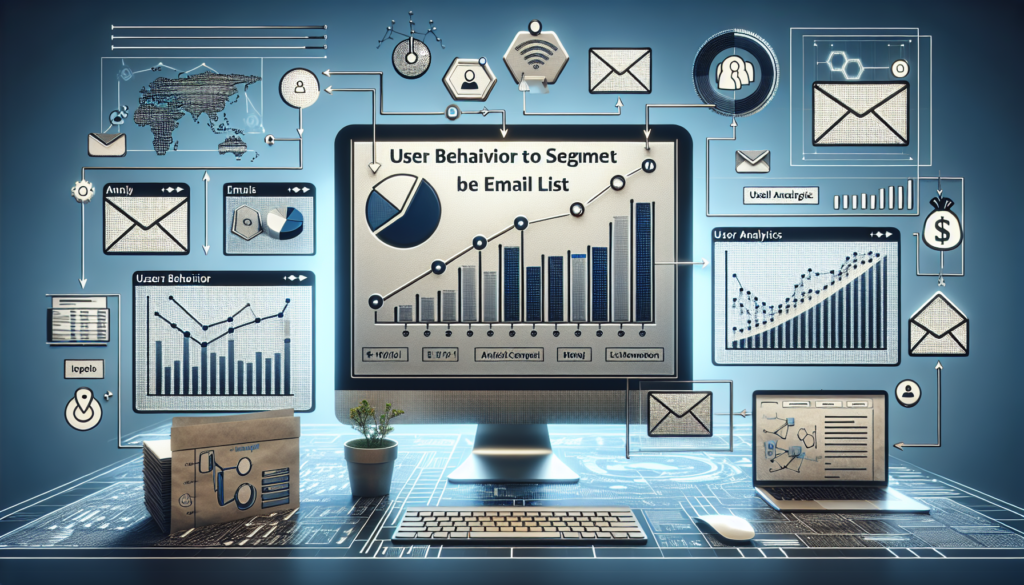In the convergence of digital marketing and data analytics, email list segmentation stands out as a critical tool for the success of businesses’ communication campaigns. Leveraging immense volumes of user behavior data, we can design more personalized, effective email strategies with significantly higher return on investment (ROI). This article unravels the theory, methodology, and practical applications of advanced email list segmentation based on user behavior, offering a guide for its effective implementation.
Foundations of Behavior-Based Segmentation
The segmentation of lists is not a novel concept, but the evolution of Big Data and Machine Learning have expanded its boundaries. User behavior provides signals about their preferences, needs, and intentions, facilitating the creation of hyper-segmented profiles.
Identify and Track Key Behaviors: Through web analytics platforms and online tracking tools, activities such as the frequency of visits to a page, interactions on the site, purchase history, and responses to previous email marketing campaigns can be recorded.
Predictive Analysis and Behavior Modeling: Using predictive models, it is possible to anticipate future actions of users based on their past behaviors. This allows for the design of email campaigns that align with conversion probabilities.
Advanced Personalization: Beyond including the recipient’s name in an email, advanced personalization involves adjusting the content and offers presented to an individual user’s interest pattern and behavior.
Practical Applications and Measurable Results
Implementing effective list segmentation requires careful orchestration between data collection and analysis and the execution of email marketing campaigns.
Segmentation by Purchase Behavior: Purchase history can indicate consumer interest in certain product categories, suggest a propensity towards certain price ranges, or reveal a predisposition towards discounts and offers.
Segmentation by Level of Engagement: Users who regularly open and click on emails may be more receptive to certain types of content, while those who rarely interact may need a different approach or be relegated to low-priority segments.
Segmentation by Stage in the Sales Funnel: Online behavior can be an indicator of the stage a user is at in the buying process. Segmenting lists based on this stage allows for sending more relevant emails that guide the user on their journey towards conversion.
Optimization of Send Times and A/B Testing: Through the analysis of user interaction with emails, the optimal time to send communications can be defined, and A/B tests can be carried out to fine-tune messages and achieve a higher open and click rate.
Weaving Strategies and Future Trends
Looking ahead in email list segmentation involves considering the integration of Artificial Intelligence (AI) and Machine Learning in strategic decision-making.
AI and Automation in Segmentation: AI can uncover hidden patterns and automate the creation of dynamic segments that adjust in real-time to users’ changing behaviors, maximizing the relevance and efficiency of campaigns.
User Privacy and Data Regulations: Growing concerns about privacy and data protection policies (such as GDPR) demand a careful approach in the collection and use of personal information. This challenge requires transparency and offering clear value in exchange for the use of behavioral data.
Multichannel Integration and Omnichannel Segmentation: Consistency in communications across various digital channels is becoming a staple. The next frontier is a segmentation that adapts to multiple platforms, providing a cohesive, personalized, and engaging experience across all touchpoints.
Case Studies: Successes and Lessons
The impact of behavior-based list segmentation is best illustrated through real-life case studies.
The Power of Repurchase: An e-commerce site was able to increase its repurchase rate by 30% thanks to segmentation based on recent purchases and predictions of interest in related products, sending personalized emails that incentivize additional purchases.
Recovery of Abandoned Carts: An email strategy segmented for users who abandoned their shopping carts led to a recovery of 20% of these lost sales, thanks to timely reminders and personalized offers based on the user’s previous activity.
In conclusion, behavior-based email list segmentation is an indispensable strategy to elevate relevance and effectiveness in email marketing. Mastering the science behind behavior data and merging it with advanced marketing techniques is essential for businesses looking to optimize their engagement, retention, and ROI in an increasingly competitive and information-saturated digital landscape. Organizations that integrate these practices with responsibility and foresight are well-positioned to lead the next wave of innovations in digital communications.

